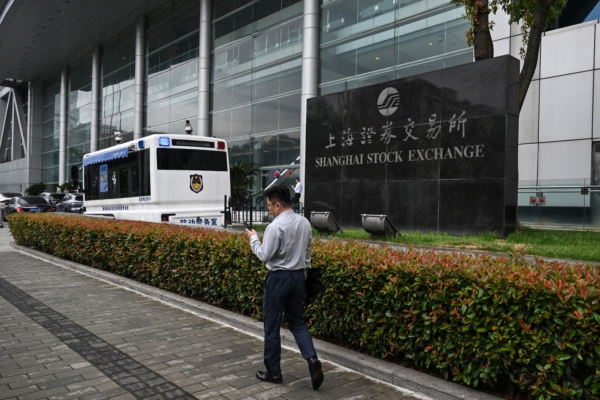August 9, the three major indexes of A-shares opened high and closed low, collectively falling, with a total turnover of 563.1 billion in the Shanghai and Shenzhen markets, hitting a near two-year low.
By the close of trading, the Shanghai Composite Index fell by 0.27% to 2862.19 points; the STAR 50 Index fell by 0.48% to 705.55 points; the Shenzhen Component Index fell by 0.62% to 8393.7 points; and the ChiNext Index fell by 0.98% to 1595.64 points.
The market as a whole saw more declines than gains. Wind statistics show that there were 1,280 gainers and 3,808 decliners in the two markets and the Beijing Stock Exchange, with 264 unchanged.
Trading in the market plummeted to freezing point. The total turnover of the Shanghai and Shenzhen markets decreased by 56.8 billion from the previous trading day to 563.1 billion yuan, hitting a new low since October 11, 2022. Of this, Shanghai’s turnover was 252.9 billion yuan, a decrease of 18.2 billion yuan from the previous trading day; Shenzhen’s turnover was 310.2 billion yuan.
So far this year, the last time the trading volume hit freezing point in A-shares was in early July. The previous low was 577.24 billion yuan on July 5.
Foreign capital represented by northbound funds showed a net sell of 7.765 billion yuan, with a total trading volume of 90.106 billion yuan throughout the day, accounting for 16% of the total A-share trading volume.
Zhongyuan Securities pointed out that the overall trend of stock indexes is expected to remain volatile in the future, while it is still necessary to closely monitor changes in policy, capital, and external factors.
Shen Meng, Executive Director of Xiangsong Capital, told Caixin that better-than-expected US employment data indicates a reduced risk of economic contraction in the US under high interest rates. The recent market deep correction was just an overreaction. A-shares still lack systemic structural reversal forces, and investor confidence remains low.
Zhang Zihua, Chief Investment Officer of Shenzen Qianhai Hongshunhe Investment Company, told Caixin that the overnight surge in US stocks was mainly due to better-than-expected initial jobless claims data, weakening the recession concerns that began last Friday, leading to an index recovery. It is expected that the US stocks may initiate a rebound trend in the next month, fluctuating upward. A-share overall trading volume is still relatively weak, and after themes start to give negative feedback, trading difficulty increases.

